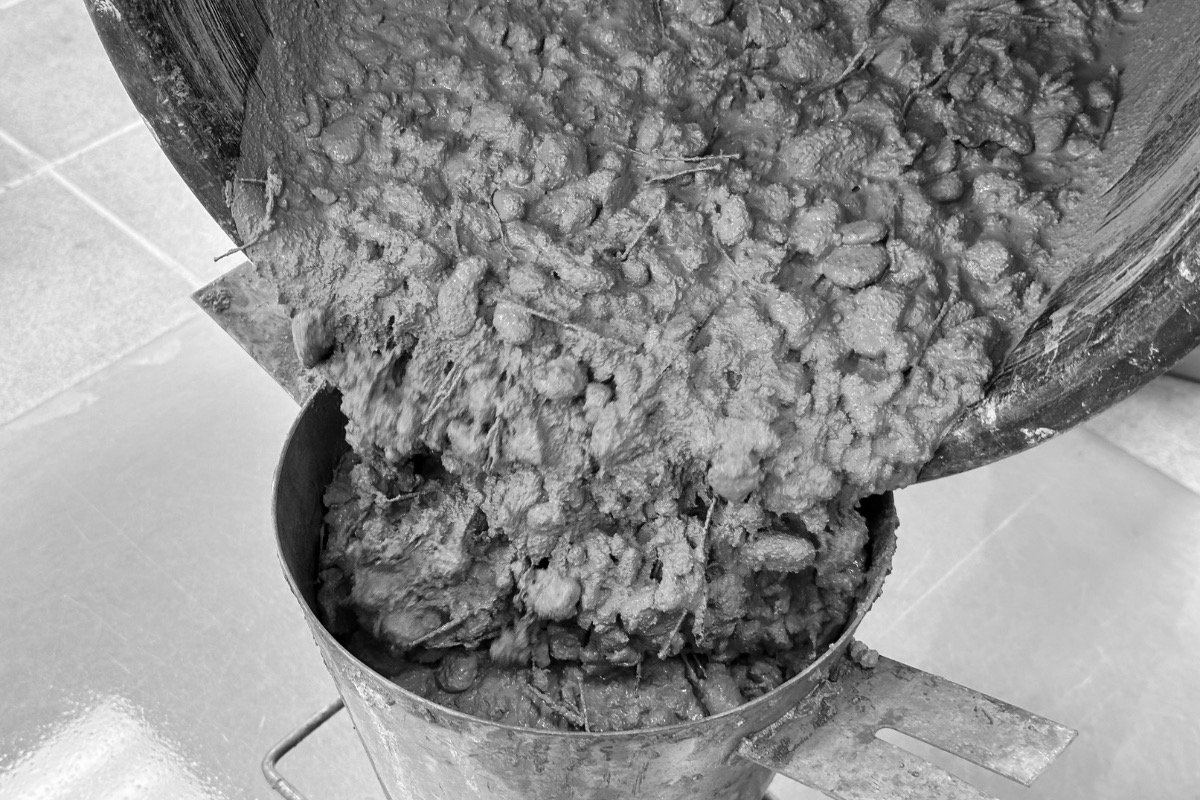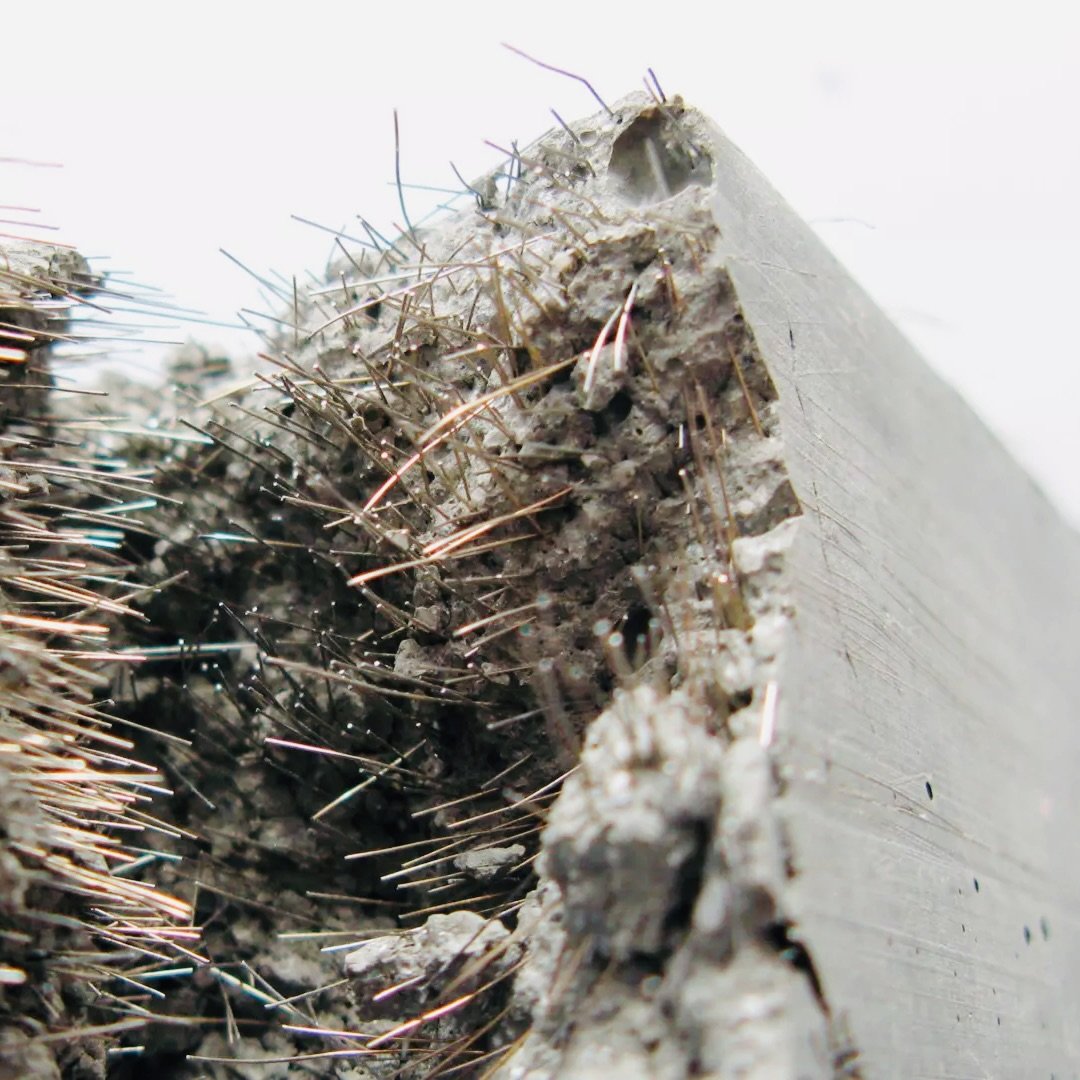Are fibres in concrete silo floors worth the cost?
Is it worth paying to have fibres added to your ready mix concrete for a new silage clamp? The sales rep will probably be very encouraging about the benefits of fibres in concrete but before you spend any more than is absolutely necessary, it’s wise to learn as much as you can about the subject. Before you can answer if fibres are worth the money, you need to find out what they do and how.
Why is concrete reinforced?
Concrete is (in my humble opinion) a remarkable material. It’s cheap and easy to make from materials that are readily available; it’s easy to make into all sorts of shapes; and it is very, very durable. The roof of the Pantheon in Rome is made from concrete and it’s over 2000 years old, it’s also unreinforced so why do we reinforce concrete and is it worth the bother?
For all its advantages, concrete has some limitations. It is extremely good at resisting compressive forces, but it’s relatively weak under tension forces. Steel on the other hand is the reverse, it’s extremely good under tension and poor under compression. To demonstrate this, just think about a piece of thin wire (maybe old fashioned electric fence wire), that’s held in two hand with your arms apart, it will stand massive tension if you pull it but it buckles so easily when you apply any compression by pushing your hands together.
By combining the two materials, steel and concrete together, we can take advantage of both the properties strengths. The concrete takes all the load off the steel under compression, and the steel holds the concrete together under tension - the best of both worlds. The clever design of the roof on the Pantheon means the bowl shape results in all of it being under compression all the time so it doesn’t need any reinforcing to cope with tension.
Do I need to reinforce a silage clamp floor?
Hopefully your concrete floor in a silage clamp is flat so does that need some reinforcing? Well yes and no - because there is more than one reason to reinforce a floor. The first is the structural load requirement - the compression / tension thing - and then there is the matter of thermal movement. In a floor slab on a good hardcore base, there shouldn’t be any need for structural reinforcement. The concrete should (in the main) only ever be exposed to compressive forces so it doesn’t need any help, concrete is good at this.
There are exceptions to this, around the walls or steel columns, if they are tied into the floor, then there will need to be some reinforcement. And if the sub base is poor then you will need reinforcement if there is any risk of a “soft patch” under the slab. But because steel is expensive, isn’t it more sensible to sort out the sub base with crushed stone and a roller rather than reinforce a solution?
Thermal movement is another matter though. In a silage clamp there is no getting away from the fact that the floor is going to be exposed to some pretty high temperature differences between a cold January dawn and a mid August hot afternoon. In the temperate parts of the world, we tend to lay concrete in the warmer periods of the year. This means it sets and cures in highish temperatures. Once exposed to cold temperatures, concrete wants to crack because the shrinking creates tension. Most mesh in concrete floor slabs is designed to control this thermal tension, and that’s what fibres are trying to help with too.
Can fibres replace mesh in my silo floor?
It is very tempting to replace steel reinforcing mesh with fibres because they are a whole lot easer to use, no setting up and they are in every bit of concrete. They might be cheaper too although this depends on the “price on the day”. Whilst you might consider fibres in a floor slab, they are not suitable for foundations. Floors have a large surface area compared to volume and this makes them more suited to fibre reinforced concrete. So is it a good idea to replace the mesh with fibres and what sort of fibres should you choose?
What sort of fibres should I use in concrete?
There are two or three different types of fibres that are mixed into concrete: steel, polypropylene and large diameter synthetic macro fibres. The poly fibres and the large diameter are both synthetic, but large diameter are a more recent development. Steel fibres are not really suitable for silage floor in my opinion for a couple of reasons.
Firstly steel fibres will rust at the surface. Because they are spread throughout all of the concrete, some of the steel has zero cover at the surface. Steel fibres are also attacked by silage effluent and as they corrode, they produce tiny pathways for more effluent to get down into the concrete. It is possible to use stainless steel fibres (at a cost) but these still don’t solve the other big issue for me. The fibres can - and will - overtime become detached from the concrete matrix. This means they inevitably end up in the feed trough and then ultimately in the cows. Feeding steel strands to cattle is not a great idea!
Polypropylene micro fibres come in loads of different diameters and lengths and crimps, you need an expert to recommend the correct ones. They are generally safe to use in a silage clamp floor but what sort of strength do they add? Well they do add some anti cracking tensile strength to the concrete but maybe not enough to replace the mesh. The experts at the Concrete Society agree with this, whilst the good people at Cemex don’t .
The large diameter macro fibres are design to add some sort of assistance once the concrete has cracked. In other words, to do some of the work of steel mesh. This is the system that “mesh free concrete” is based on but I have yet to see it used long term in a silage clamp. Most of the applications are internal floors or are designed for different types of concrete that you’re unlikely to use on a farm, like sprayed concrete tunnels. So if they can’t replace the mesh what are they for?
Why would you add fibres to concrete?
The real benefit of fibres in concrete is in the very early stages of it curing and setting. Here the fibres do resist thermal and shrinkage cracking that can occur as the concrete sets. This is because the curing of concrete is “an exothermic hydration”. Now that’s a scary term but it’s simple really. Hydration means it’s a chemical reaction that involves water and exothermic means it gives off heat. Now I have previously covered water in concrete and it is very important not to have too much water. But it’s also vital that you have enough and the problem with the exothermic bit of this is that the heat generated can mean the concrete runs out of water before the hydration process has finished. The heat from hydration increases the evaporation from the concrete surface.
Adding more water is an absolute no no, so slowing down the loss of water is the key. Covering with a sheet is useful, but then so is using fibres because fibres definitely slow down the migration and loss of water from the slab. In the trial work I have done, cubes of fibre concrete cured in air reached similar early strengths as standard cubes cured in water, this is a big advantage.
So polypropylene micro fibres can certainly help you form better concrete floor slabs to a silage clamp, but I don’t think that they can replace the steel mesh. I would also not want to pay much of a premium for them because to get all the benefits, you need to mix them for a very precise length of time and use a tightly controlled water cement ratio. Unfortunately simply chucking in some fibres and pulling out the mesh is not the recipe for a durable silage clamp floor.
If you want to discuss more about fibres in concrete or would like to discuss any other aspects covered in this series, contact me at jeremy@silageconsultant.co.uk



